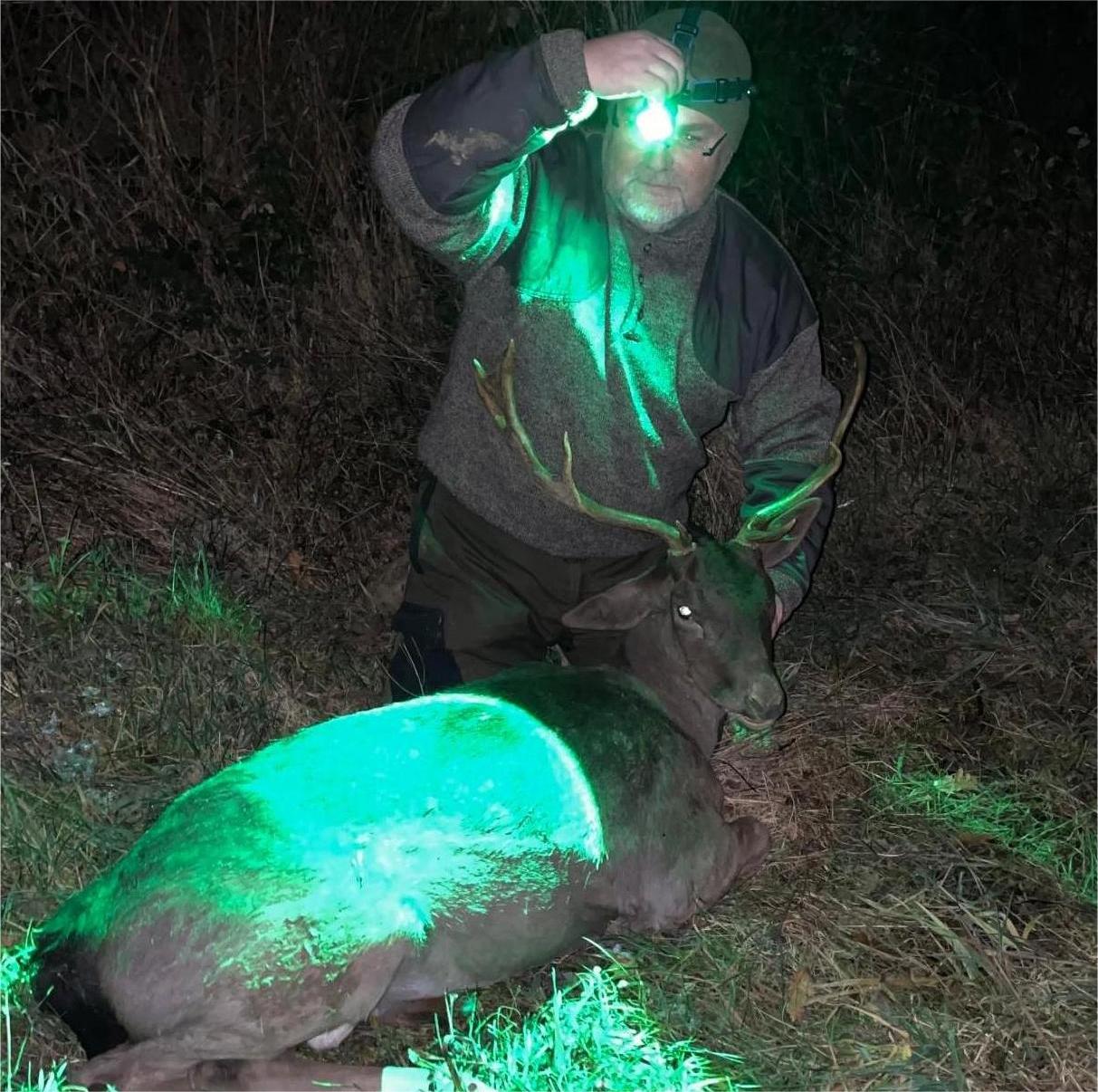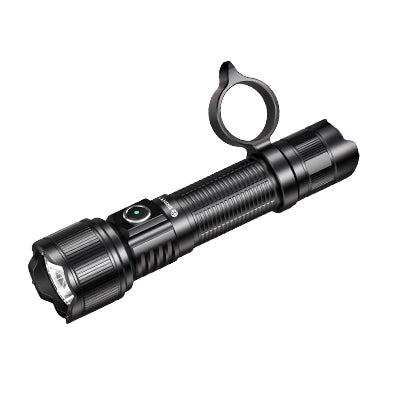Introduction: The Role of Lighting in Successful Hunting
Ask any experienced hunter, and they’ll tell you—lighting can make or break a hunt. Many hunters spend hours perfecting their camo, scent control, and firearm setup, but overlook one essential tool: the flashlight. Choosing the right hunting flashlight is more than just about brightness; it’s about adapting your beam, color, and power to the type of game you’re pursuing. Whether you’re stalking deer in misty Nordic forests or scanning open plains for coyotes, understanding how different light types affect your success is key.
Understanding How Different Animals See Light
Different animals perceive light in unique ways, which directly impacts how visible you are to them. Knowing their light sensitivity helps you stay undetected and increase your chances of success.
- Deer and Elk: These animals are highly sensitive to blue and white light but struggle to detect red. That’s why red light hunting flashlights are perfect for stalking deer quietly.
- Wild Boar: Pigs have poor eyesight but respond to green light—ideal for identifying them without alarming the herd.
- Coyotes and Foxes: As predators, they have strong night vision and quickly detect white light. Use dim or filtered beams to stay hidden.
- Birds and Waterfowl: Some species can perceive ultraviolet light, so avoid unnecessary UV exposure during scouting.
Understanding animal vision ensures you pick the best flashlight color for hunting, giving you the stealth advantage.
Choosing the Right Beam Pattern: Floodlight vs. Throw Light
When it comes to beam patterns, hunters often fall into the “one beam fits all” trap. In reality, beam type determines your effectiveness in different environments.
-
Throw Light (Focused Beam): Perfect for spotting targets at long range or scanning open terrain.
Recommended tool: Brinyte T28 Artemis, featuring adjustable focus for long-distance illumination and precision target tracking. -
Floodlight (Wide Beam): Best for close-range use, camp setups, or navigating dense woods.
Recommended tool: Brinyte HL28 Explorer Headlamp, offering wide, even coverage for hands-free illumination.
Pro tip: Learn to control your beam discipline—scan briefly on high power, then move with a lower beam to preserve night vision.

Matching Brightness and Lumen Output to Hunting Scenarios
More lumens aren’t always better. The key is matching brightness to your specific task.
- Night Ambush / Stalking: 200–400 lumens is sufficient for close observation without alerting animals.
- Tracking and Navigation: 600–1000 lumens provides enough clarity without battery overuse.
- Long-Distance Scanning or Targeting: 1200+ lumens are ideal for quick bursts of illumination—just don’t overuse turbo mode.
For example, Brinyte’s PT28 Oathkeeper offers versatile output levels suited for tactical and hunting situations alike, ensuring efficient runtime management.
Recommended Flashlight Colors and Modes for Different Game Types
| Game Type | Best Light Color | Suggested Beam / Mode | Brinyte Recommendation |
|---|---|---|---|
| Deer Hunting | Red Light | Medium brightness, throw beam | T18 Artemis |
| Wild Boar | Green Light | Wide beam, tracking mode | T28 Artemis |
| Coyote / Predator | White or IR | High beam, short bursts | PT28 Oathkeeper |
| Bird / Waterfowl | White + UV | Flood beam, wide coverage | HL28 Explorer |
Each of these lighting setups helps you adapt to the game’s behavior. Red light flashlights preserve your stealth, green beams highlight movement in dense cover, and IR or UV light adds an edge for advanced night observation.

Other Key Factors: Battery, Durability, and Weather Resistance
Great lighting means nothing if your flashlight fails mid-hunt. That’s why build quality and endurance matter just as much as lumens.
- Battery Life: Choose flashlights with long runtime or replaceable 18650/21700 batteries for extended trips.
- Charging Convenience: USB Type-C fast charging and battery-level indicators save you from surprises in the wild.
- Weather Resistance: Hunting often happens in unpredictable weather. Look for IP66+ waterproof and cold-resistant flashlights that can withstand −20°C.
Brinyte’s hunting lineup is designed for reliability under these exact conditions—built for rain, frost, and rugged use.
Pro Tips from Experienced Hunters
Practical experience separates seasoned hunters from beginners. Here’s what the pros know:
- Always test your flashlight before entering the field—switches, charging ports, and beam focus.
- Use low mode while walking, and switch to high beam only for spotting or shooting.
- Avoid pointing light directly at the animal’s eyes during observation—it breaks their natural calm.
- Carry a backup light in case your main beam fails.
Small habits like these ensure light discipline and safety throughout your hunt.

Frequently Asked Questions
Q1: What color light is best for deer hunting?
Red light is ideal because deer have limited sensitivity to red wavelengths, allowing hunters to move undetected.
Q2: Should I use red or green light for wild boar hunting?
Green light works better for wild boar since it enhances contrast in low light and provides clear visibility without alarming them.
Q3: What lumen range is best for hunting flashlights?
200–1000 lumens is optimal for most conditions; reserve turbo modes (1200+ lumens) for scanning or identification.
Q4: Is white light bad for night hunting?
White light offers maximum visibility but can easily expose your position. Use it sparingly or with filters.
Q5: How far should a hunting flashlight throw?
A good hunting flashlight should cover at least 200–300 meters for open areas; adjustable-focus models like Brinyte T28 can exceed 500 meters.
Q6: Are rechargeable batteries reliable in cold weather?
Yes, if you use quality lithium-ion cells and keep them insulated. Brinyte flashlights are tested for reliable performance down to −20°C.
Conclusion: Tailoring Your Lighting = Tailoring Your Success
No single flashlight can handle every hunting scenario. Each game type, terrain, and season demands a customized lighting setup. By understanding how beam patterns, color filters, and brightness levels influence your hunt, you can approach every outing with precision and confidence.
Brinyte offers a wide range of hunting flashlights designed for professional and recreational hunters alike—crafted to perform when visibility and silence matter most.
✨ Explore Brinyte’s hunting collection today and find the perfect flashlight for your next adventure.



